April 25th, 2008 · Comments Off on Brown-Sequard ·
Back
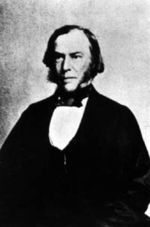
Near the end of his life, he made and injected an elixir that was a liquid extract made from the testicles of guinea pigs and
dogs. Brown-Sequard said his formula increased his physical strength and intellectual prowess, relieved his
constipation, and even lengthened the arc of his urine.
Categories: Testosterone
Tags: Eric Dube —
April 25th, 2008 · Comments Off on In Flander’s Field: Mustard Gas Affects History ·
Categories: Mustard Gas
Tags: Elizabeth Gorenbergh —
April 25th, 2008 · Comments Off on By Any Other Name: Origins of Mustard Gas ·
Chemical Warfare: an Introduction to Mustard Gas | Chemically Speaking: the Structure of Mustard Gas | By Any other Name: Origins of Mustard Gas | In Flander’s Field: Mustard Gas Affects History | Agent of War to Anti-Cancer Drug: History Affects Mustard Gas | Taking the Next Step: More Sources on Mustard gas
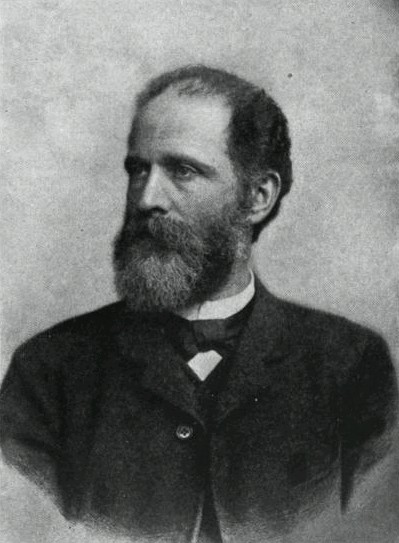
Scientists involved in the discovery/synthesizing:
- César-Mansuete Desperetez (1798-1863): Reported on some of the properties of a combination of sulfur dichloride and ethylene, which reflected some of the properties of Mustard Gas, though without the irritating effects.
- Albert Niemann (1834-1861): First to describe Mustard Gas’s toxic properties,
- Frederick Guthrie (1833-1886): Synthesized and described the properties of mustard gas.
- Victor Meyer (1848-1897): Synthesized a purer product, which produced irritants that both take a long time to appear (hours after exposure) and take a long time to heal. (Above)
- Hans T. Clarke (1887-1972): Improved Meyer’s process as well as observing that by not breathing in the fumes or allowing contact with the skin that the molecule is “perfectly safe”.
Other Names of Mustard Gas:
- Bis(2-chloroethyl) sulfide
- Iprit
- Kampfstoff “Lost”
- Lost;
- Mustard Gas
- Senfgas
- Yellow Cross Liquid
- Yperite
- Distilled Mustard
- Mustard T- mixture
Categories: Mustard Gas
Tags: Elizabeth Gorenbergh —
April 25th, 2008 · Comments Off on Chemically Speaking: Structure of Mustard Gas ·
Chemical Warfare: an Introduction to Mustard Gas | Chemically Speaking: the Structure of Mustard Gas | By Any other Name: Origins of Mustard Gas | In Flander’s Field: Mustard Gas Affects History | Agent of War to Anti-Cancer Drug: History Affects Mustard Gas | Taking the Next Step: More Sources on Mustard Gas
Mustard gas is just one of the sulfur mustards, which in the pure form are odorless, colorless, thick liquids that are not soluble in water. The molecule is soluble in fat, so it can be absorbed through the skin, resulting in the characteristic blisters.
Molecular Formula: C4H8Cl2S

Categories: Mustard Gas
Tags: Elizabeth Gorenbergh —
April 25th, 2008 · 5 Comments ·
Chemical Warfare: an Introduction to Mustard Gas | Chemically Speaking: the Structure of Mustard Gas | By Any other Name: Origins of Mustard Gas | In Flander’s Field: Mustard Gas Affects History | Agent of War to Anti-Cancer Drug: History Affects Mustard Gas | Taking the Next Step: More Sources on Mustard Gas
Every day Saddam remains in power with chemical weapons, biological weapons, and the development of nuclear weapons is a day of danger for the United States.
Sen. Joseph Leiberman, D-CT, Sept. 4, 2002
Weapons of mass destruction are just that. A weapon that has the ability to take out a large portion of the population. Although history has yet to decide the fate of the Iraq War, one thing is clear. Historically, chemical agents have been used to take out a large group of people with little harm sustained from the other side. World War I marks the first “successful” use of chemicals against the enemy, with later uses in World War II, South Africa, an Iraq to name a few.The type of agents included under the term “chemical warfare” include: blood agents, blister agents, nerve agents, pulmonary agents, incapacitating agents, and riot control agents. Currently, the Chemical Weapons Convention outlaws the production, stockpiling, or use of chemical weapons.
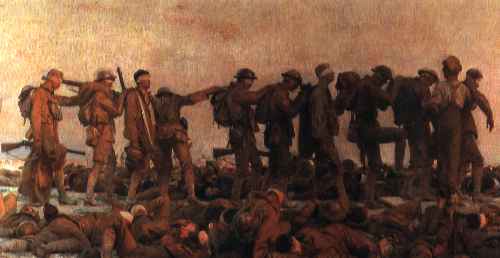
Gassed by John Singer Seargent
Categories: Mustard Gas
Tags: Elizabeth Gorenbergh —
April 25th, 2008 · Comments Off on Historical Significance ·
Introduction to Testosterone Chemistry of Testosterone Discovery and Synthesis Anabolic Steroids
References
Cruel Male Leaders
Did heightened testosterone levels contribute to history’s villains?
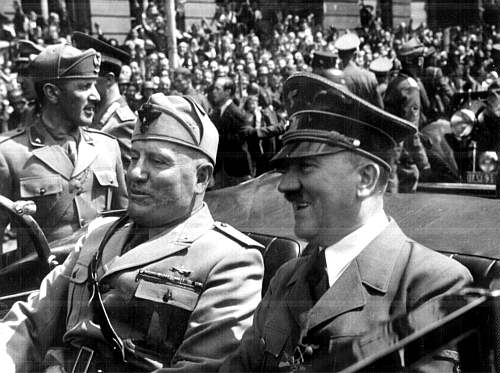
Napoleon Complex
-The Napoleon complex is named after French Emperor Napoleon Bonaparte. Napoleon overcompensated for his short height (lack of testosterone) by seeking power, war and conquest.

Baby Boom
-The “golden age of testosterone reseach” coincides with the increase in newborn’s between 1946 and 1964
-Testosterone was synthetized as a fertility drug

Categories: Testosterone
Tags: Eric Dube —
April 25th, 2008 · Comments Off on Discovery and Synthesis ·
Introduction to Testosterone Chemistry of Testosterone Historical Significance
Anabolic Steroids
The Future of Testosterone
References
Prehistory and Religious Doctrine
-Jewish Circumcision
-Egyptian Fertility Statues found in pyramids
The Middle Ages
-Human Castration
-Serendipitous Discovery that the Testes effect behavior, emotion and overall health
1849-Arnold Berthold
-experimentation of castration on chickens
1889-French Physiologist, Charles Edouard Brown-Sequard
“Rejuvenating therapy for the body and mind”
1918- Leo L. Stanley, resident physician of San Quentin State Prison in California
transplanted testicles removed from recently executed prisoners into inmates: some of whom claimed that they recovered sexual potency
1927- Fred C. Koch, University of Chicago’s Professor of Physiologic Chemistry
In 1927, Koch and his student, Lemuel McGee, derived 20mg of a substance from a supply of 40 pounds of buffalo testicles that, when administered to castrated roosters, pigs and rats, remasculinized them.
1934- Ernst Laquer
purified testosterone from bovine testicles
1935- Adolph Butenandt and Leopold Ruzicka
-funded by pharmaceuticals research labs in Germany and Switzerland respectively, joint synthesis
-the two share the 1939 Nobel Peace Prize
The early 1930s 1950s “The Golden Age of Steroid Chemistry”
Research proved that this newly synthesized compound — testosterone — was a potent multiplier of muscle, strength, and wellbeing.
Categories: Testosterone
Tags: Eric Dube —
April 25th, 2008 · Comments Off on Chemistry of Testosterone ·
Introduction to Testosterone Discovery and Synthesis Historical Significance
References The Future of Testosterone
Chemical Structure

-Carbon atoms have four bonds to other C-atoms, to H-atoms, or to O-atoms
-Of the 19 C-atoms in testosterone, all but 2 lie in the “skeleton” of the molecule.
-Three hexagonal (6) C rings and one pentagonal (5) C ring are fused together at the carbons to a form a framework called an androstane skeleton.
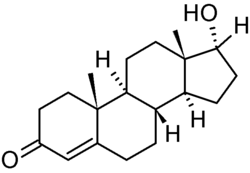
-Most of the C-C bonds are single bonds however testosterone has one Carbon=Carbon double bond and there is one Carbon=Oxygen double bond found in the left corner of the above figure.
-dotted versus solid depth indicators represent the “trans” feature in which the points of fusion between rings alternate between an atom sticking up and an atom sticking down
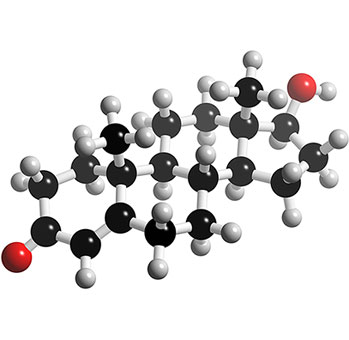
<!–[if !vml]–> <!–[endif]–> -the fourth bond at these points is not necessary to maintain the framework of the skeleton and in testosterone it is occupied by Hydrogen-atoms or by methyl groups (CH3-group). The Trans ring fusions make the steroid skeleton more rigid and allows only minor movements at the ends of the arrangement.
<!–[endif]–> -the fourth bond at these points is not necessary to maintain the framework of the skeleton and in testosterone it is occupied by Hydrogen-atoms or by methyl groups (CH3-group). The Trans ring fusions make the steroid skeleton more rigid and allows only minor movements at the ends of the arrangement.
The effects of testosterone in mammals occur by way of two main mechanisms:
1) By activation of the androgen receptor
2) By conversion to estradiol and by activation of certain estrogen receptors.
Categories: Testosterone
Tags: Eric Dube —
April 24th, 2008 · 3 Comments ·
Chemistry of Testosterone Discovery and Synthesis Historical Significance Anabolic Steroid
Future
References

-a steroid hormone from the androgen family
-found primarily in the testes of males and the ovaries of females
-Males produce 20-40 times more testosterone than females —>this discrepancy causes many of the biological differences between the sexes
-Beliefs that the male sex organ holds the key to strength, vitality and masculinity have prehistoric context:
-distinct physical and behavioral changes occurred after castrating male mammals
-the male hormone was finally synthesized in a laboratory in 1935, the responsible parties named their discovery Testosterone.

Categories: Testosterone
Tags: Eric Dube —
April 24th, 2008 · 3 Comments ·
Introduction | Discovery | Chemical Composition
Usage | Historical Significance
In terms historical significance, the use of heroin has a great cultural and economic impact.
Cultural:
The drug has inspired countless writers, musicians and other artists over the past century worldwide. References to heroin feature in a variety of films and music works. The epitome of which are the movies “Trainspotting” and “Requiem for a Dream” which portray stories of heroin addits and the consequences of drug abuse. Many music artists have been influenced by the heroin. The list includes John Lennon, David Bowie, and Ray Charles. The drug is also associated with the death of Kurt Cobein and John Belushi, both of whom died as a consequence of a heroin-cocaine overdose.
Economic:
The economic impact of heroin is a result of its cultivation in Third-World contries and subsequencly, its trafficing to the Western World. Since the drug is extracted from the opium poppy plant, its history is tightly linked to the trade of opium and the conflicts resulting from it. Nowadays, the drug channels profits to countires like Afghanistan (the major supplier of heroin) where they are used by local warlords for underground purposes.
Categories: Heroin
Tags: Kiril Popov —











 <!–[endif]–> -the fourth bond at these points is not necessary to maintain the framework of the skeleton and in testosterone it is occupied by Hydrogen-atoms or by methyl groups (CH3-group). The Trans ring fusions make the steroid skeleton more rigid and allows only minor movements at the ends of the arrangement.
<!–[endif]–> -the fourth bond at these points is not necessary to maintain the framework of the skeleton and in testosterone it is occupied by Hydrogen-atoms or by methyl groups (CH3-group). The Trans ring fusions make the steroid skeleton more rigid and allows only minor movements at the ends of the arrangement.
